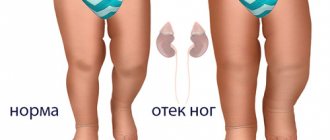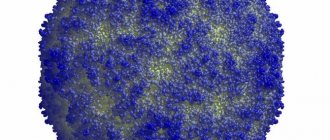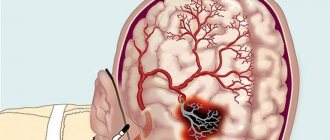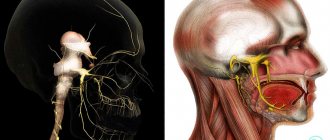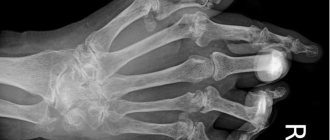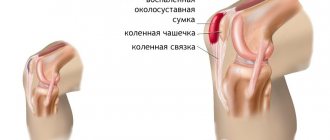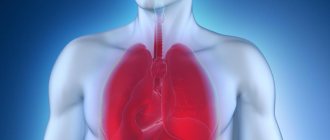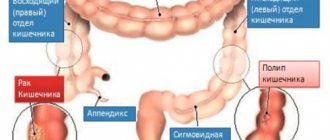Angelman syndrome is a complex genetic disease that affects the nervous system in children, characterized by microcephaly (small head size), epileptic disorders and an atypically cheerful disposition. The pathology causes mental retardation in the child, significant disturbances in speech and coordination of movements. This neurological disease is also called “happy puppet syndrome” due to the fact that sick children smile, laugh, and wave their arms a lot. What other signs may indicate Angelman syndrome? Is this pathology treatable? Let's turn to expert advice.
What is parsley syndrome?
Angelman (Parsley) syndrome is a genetic disorder that causes developmental delays, severe learning difficulties, and typical appearance and behavior. English doctor Harry Angelman first described it in 1965 - children have "flat heads, jerky movements, protruding tongues and fits of laughter."
The most common age at diagnosis of the disease is between three and seven years of age, when signs of Angelman disease become most obvious. Infants appear normal at birth but often have feeding problems in the first months of life and exhibit marked developmental delays by 6–12 months.
Attacks often begin between 2 and 3 years of age. Speech impairment is severe, often accompanied by hyperactivity, small head size, sleep and motor disorders (ataxia), and unprovoked episodes of laughter and smiling.
Clinical characteristics of the child
Outwardly, a sick child looks quite content and happy, however, this impression is deceptive .
Such children always have a severe delay in mental and physical indicators, which leaves a negative imprint on learning and communication with peers.
In severe cases, a persistent and significant impairment of hand motor skills develops, which makes the child unable to take care of himself (in particular, the child cannot independently fasten a button or zipper on clothes or shoes, or perform any other actions that seem quite ordinary to a healthy person) .
All this significantly worsens the child’s quality of life.
Children suffering from Angelman syndrome also have external differences , such as:
- flat face (its middle part), insufficient development of the facial bones of the skull;
- small and pointed chin;
- hypertrophied lower jaw, which protrudes strongly forward;
- a large and wide tongue that the child often sticks out;
- violations of the dentition, the presence of interdental spaces;
- small skull (the rest of the bones of the skeleton are of normal size, corresponding to age indicators);
- deformation (curvature) of the spine.
Symptoms and signs
The disorder is associated with a wide range of possible symptoms. The specific symptoms of Angelman syndrome vary from case to case. Individuals with the condition will not have all the symptoms discussed below. For example, some people may have seizures, while others may not. Most are unable to speak, and sometimes there is limited speech.
Children with Angelman syndrome experience delays in achieving developmental milestones (developmental delays) and have severe learning difficulties. Most do not develop the ability to speak more than a few words. Usually understand simple commands.
Older children and adults can communicate using gestures and/or the use of communication cards, but there is an impairment in expressing thoughts.
Early signs
When detected early, disturbances in movement or balance and jerky movements due to an inability to coordinate movements (ataxia) are noticeable. There is decreased muscle tone (hypotonia) in the trunk, increased muscle tone (hypertonicity) in the arms and legs, and abnormally exaggerated or animated reflex reactions (hyperreflexia).
Movement disorders appear during infancy (approximately 6-12 months). Motor milestones (eg, walking) are usually delayed. In mild cases, children begin to walk at the age of 2-3 years.
In severe cases, walking may be noticeably slow, stiff and jerky. Some cannot walk until they are 5-10 years old. In about 10 percent of cases, children with Angelman syndrome cannot walk without assistance.
In newborns
Newborns and children with Angelman disease have distinct symptoms of characteristic happy behavior with frequent, inappropriate episodes of unprovoked, prolonged laughter. Children may be easily agitated, hypermotor, and hyperactive. They are active explorers, constantly on the move.
In many cases, epileptic seizures occur. The attacks usually begin between one and five years of age and often improve during adolescence.
Some manifestations associated with laughing doll syndrome are less common than the above symptoms.
Facial features
In some cases, individuals have characteristic facial features, a prominent chin, deep eyes, an abnormally wide mouth (marcostomy) with a prominent tongue, widely spaced teeth, and an abnormally flat back of the head (brachycephaly).
Gastrointestinal
Problems with eating and sleeping arise in infancy due to problems with swallowing and tongue movement disorders. Children or adults often experience constipation or gastroesophageal reflux disorder (GERD) , a condition characterized by the backflow of stomach or small intestinal contents into the tube that connects the mouth to the stomach (esophagus).
Additional symptoms
Excessive drooling, crossed eyes (crossed eyes), lack of normal color (hypopigmentation) of the skin, eyes and hair due to the lack of certain melanin pigments.
This lack of pigment in the eyes can cause sensitivity to light (photophobia), rapid, involuntary eye movements (nystagmus), and decreased clarity of vision (visual acuity).
Sleep disturbances, such as decreased need for sleep and disrupted or abnormal sleep/wake cycles (eg, waking up at night or earlier than usual) are common. Children love water, music, and are attracted to shiny objects.
Some people have increased sensitivity to heat. As you age, a progressive curvature of the spine (scoliosis) may become apparent. Puberty is usually not delayed, and childbearing is possible.
Adults have more pronounced facial features and mandibular prognathism. Sometimes an abnormal bulging of the cornea (keratoconus) develops. Mobility decreases as you get older, and joint spasms (contractures) develop. Some are prone to obesity.
Symptoms usually present
- Normal prenatal and birth history, normal head circumference at birth, no major birth defects.
- Normal metabolic, hematological and chemical laboratory profiles.
- Structurally normal brain on magnetic resonance imaging (MRI) or computed tomography. Mild cortical atrophy or dysmyelination may occur.
- Delayed achievement of developmental milestones without loss of skills.
- Developmental delays from 6 to 12 months are classified as severe.
- Speech impairment, with minimal use of words; nonverbal communication skills are higher than expressive language skills.
- Impaired movement or balance, usually gait ataxia and/or shaky limb movements.
- Behavioral uniqueness, including any combination of frequent laughing/smiling; excitability, often with manual movements; hypermotor behavior; attention deficit.
More than 80% of victims
- Delayed or disproportionately slow growth of head circumference. Usually results in absolute or relative microcephaly by age 2 years.
- Seizures, usually starting at age 3 years.
- An abnormal electroencephalogram (EEG) with a characteristic pattern of slow waves with large amplitude.
Less than 80%
- Flat back of the head.
- Occipital groove.
- Protruding tongue.
- Sucking/swallowing disorders.
- Feeding problems and/or muscle hypotonia in infancy.
- Prognathia.
- Wide mouth, widely spaced teeth.
- Frequent drooling.
- Excessive chewing behavior/vomiting.
- Strabismus.
- Hypopigmented skin, blond hair and eye color (compared to family); visible only in those who have deletion.
- Hyperactive reflexes of the deep tendons of the lower extremities.
- Raised, bent position of the arm, especially during movement.
- Wide gait with pronation or valgus of the ankle.
- Increased sensitivity to heat.
- Abnormal sleep-wake cycles, decreased need for sleep.
- Passion for water; fascination with crispy objects such as paper, plastics.
- Abnormal feeding behavior.
- Obesity (more common in those who do not have an exception).
- Scoliosis.
- Constipation.
Risk group
Parental chromosomal abnormalities should be considered as risk factors and precipitating elements.
- Ring chromosome - removal of genetic material from the ends of a chromosome and joining of the newly formed ends into a ring.
- Duplication is a partial repetition of chromosomes and the corresponding appearance of excess genetic material.
- Translocation is the addition of an element from another chromosome to a chromosome.
- A deletion involves the absence of one of the sectors of the chromosome.
- Microdeletion is a consequence of the rearrangement of the Y chromosome and the exchange of sectors between sex chromosomes during meiosis. A few chromosomes are missing, most often one of the genes is also missing.
- Inversion is a 180-degree turn of one of the chromosome sections, the order of the genes is reversed, and part of the chromosome is omitted.
- Chromosome trisomy is caused by the presence of one or more extra chromosomes in a set. The cause of this genetic defect is the nondisjunction of chromosomes during division.
Causes
Deficiency of E3 ubiquitin protein ligase (UBE3A) gene expression causes Angelman syndrome. The gene is part of chromosome 15 (15q11-q13).
Chromosomes, which are present in the nucleus of human cells, carry genetic information. Cells in the human body usually have 46 chromosomes.
The pairs of human chromosomes are numbered 1 to 22, and the sex chromosomes are designated X and Y. Boys have one X and one Y chromosome, and girls have two X chromosomes.
Each chromosome has a short arm, designated "p", and a long arm, designated "q". Chromosomes are further divided into many groups, which are numbered.
For example, "chromosome 15q11-q13" refers to bands 11-13 on the long arm of chromosome 15. The numbered bands identify the location of thousands of genes present on each chromosome.
Mutations
Mutations in the ube3a gene that cause Angleman syndrome are associated with the absence of the gene, changes in the structure of the gene, or changes in the function or expression of the gene. In about 10 percent of cases, no cause can be identified.
In most cases, genetic changes are the result of spontaneous mutation, but in approximately 3-5% they can be inherited
.
In approximately 70 to 75 percent of cases, there is a microdeletion of the 15q11-13 region of maternal chromosome 15, which includes the deletion of the UBE3A gene.
Find out more Unconscious wakefulness, signs of apallic syndrome
This deletion usually occurs sporadically (de novo) and is not inherited.
The risk of having a child with Angelman syndrome in a family is estimated to be 1-2 percent or less.
A unique genetic phenomenon associated with marionette syndrome is “imprinting.” Everyone has two copies of each gene: one received from the father and one from the mother. In most cases, both genes are turned on and active.
However, in some cases, one gene is preferentially blocked or turned off depending on which parent it came from. This process of "parental origin" inactivation is an example of "genomic imprinting".
Peculiarities
In about 20 percent of cases (3-5%) it is caused by DNA removal at the Imprinting Center; the remaining 80 percent of cases are caused by as-yet unknown or unidentified defects in genetic imprinting.
There may be up to a 50 percent risk of recurrence of Angelman syndrome due to imprinting defects that have DNA deletions.
Some people with symptoms of Angelman syndrome do not have an identifiable chromosome 15 abnormality. Some individuals in this group may have a disorder other than Parsley syndrome.
In simple words
Below is a very general explanation written for parents.
- Illustration of chromosome 15 with the red section, which contains the UBE3a gene, and is often deleted from the maternal chromosome in doll syndrome.
- There are many mechanisms that cause the disorder. The most common is "delete".
If chromosome 15 is like the one in the encyclopedia, with a special chapter that is only found in the volume inherited from the mother, then imagine that chapter being torn out.
Most people with laughing doll syndrome have a deletion on chromosome 15. They are missing a chapter, so the brain is missing some instructions to develop.
From father
The father's chapter is present but has been "washed out" due to the natural process of imprinting, so the pages appear blank and the brain cells cannot access the information.
- Other people have a mutation in the UBE3A gene. This is similar to a misspelling of an important chapter that is only present on the chromosome inherited from the mother. This misspelling is so severe that it renders most of the chapter unintelligible to brain cells. Again, the end result is that the brain lacks important information for learning and development.
- Some people with Parsley syndrome have unilateral dyssomatism, or UPD. In these cases, the person inherited two copies of this "Volume 15" from his father and no copy from his mother. Again, information that is only found in the volume inherited from the mother is missing, and both copies from the father are empty or “washed out.”
- A small number of people with Angelman have a center imprint (IC) defect on the maternal chromosome. There is a region on chromosome 15 that helps the chromosome decide whether chapters of information are available or "washed out."
From mother
When there is a defect in the mother IC, chapters that are normally accessible become inaccessible. Even though "volume 15" is full and normal, the brain cells cannot access the information they need.
- This figure shows the different mechanisms that cause the disorder. The red chromosomes represent the chromosome inherited from the mother, while the blue chromosomes represent the chromosome inherited from the father.
The first example shows a normal "volume" 15 pair with the father's chromosomal head having a "blurred" or "silent" UBE3A, while the mother's head is active and UBE3A makes the genetic instructions in that region available to brain cells.
Other examples
The remaining examples illustrate known mechanisms that cause pathology by making the mother's genetic information inaccessible to cells in the brain.
For example, in deletions, the UBE3A gene is completely absent because the “head” has been “torn out.” In UBE3A mutations, the UBE3A gene is "mistaken," rendering that copy of UBE3A nonfunctional.
- Finally, a few people have all or most of the symptoms of Angelman syndrome, but every test for their genes comes back normal. In many of these cases, it is likely that we simply do not have the technology and experience.
All we know for sure is that UBE3A is vital for brain development, control of speech, movement and learning. Angelman's research into future treatments relies on finding a way to make the UBE3A present in the paternal "bulk" accessible to the brain.
Essentially, if we think about the genetic information on the father's chromosome being "blurred" and invisible, scientists are looking for ways for the data to reappear, for the brain to access the information, and for people with AS to develop normally.
Deletion of 15q11.2-q13 (~68% of cases)
Most cases of AS are caused by deletions on the maternal copy of chromosome 15. Thus, the deletion eliminates normal expression of this gene in AS individuals.
UBE3A mutations (~11% of cases)
In these people, mutations in the UBE3A gene either prevent its expression or function. Thus, these individuals do not have appropriate levels of functional UBE3A in the brain.
Uniparental disomy (UPD, ~7% of cases)
In UPD, an individual has two copies of the paternal chromosome 15. Because UBE3A is not expressed from the paternal copy, these individuals do not have normal levels of UBE3A in the brain.
Fingerprint defect (~3% of cases)
These individuals may have a deletion of the imprinting center on chromosome 15, but cases may also be caused by loss of imprinting information during maternal oogenesis. Loss of imprinting will prevent maternal UBE3A gene expression in the brain.
Clinical/other (~11%)
These individuals have all normal tests but still meet diagnostic criteria for AS. These individuals may have hitherto unrecognized mutations that affect UBE3A or genomic imprinting on chromosome 15.
Note that there are several other syndromes that represent AS that can be tested.
Forms
Angelman syndrome is associated with four types of genetic mutations:
- A newly emerged chromosomal mutation, which is associated with the loss of a section of the chromosome at locus 15 q11 - q13. This mutation is the cause of about 80% of all cases of the disease.
- Unipaternal disomy, which is associated with the loss of the maternal locus (lack of maternal genetic material). This option is rare (about 5% of all cases).
- A defect in a number of genes subject to genomic imprinting (GI). These defects occur in 2-4% of patients as a result of a direct violation of imprinting (differences in the conversion of gene information into protein or RNA, which depend on the origin of the gene). Most often occurs as a result of loss of the GI regulatory center. GI defects without loss of the regulatory center are the result of a spontaneous mutation, the repetition of which is very rare.
- A spontaneous mutation in the maternal copy that causes the brain copy of the UBE3A gene to fail to transform. This gene encodes the activity of ubiquitin ligase (an enzyme involved in the complex process of protein breakdown). Deficiency of this enzyme is one of the molecular mechanisms of the syndrome.
It is currently not possible to establish the form of the disease in 7-9%.
Diagnostics
The diagnosis of Angelman syndrome is made based on a detailed medical history, careful clinical evaluation, and identification of characteristic symptoms.
About 80% of cases are detected through various specialized blood tests such as DNA methylation (detects but does not differentiate between chromosome deletions, imprint defects and uniparate desomania).
Fluorescent in situ hybridization (FISH) or comparative genomic hybridization detects a characteristic deletion (observed in 70% of cases) of one copy of chromosome 15 in the body's cells.
Mutational analysis of the Angelman gene, UBE3A, identifies about 10% of cases having negative DNA methylation studies.
Testing
The types of testing available for different causes of happy doll syndrome.
- A DNA methylation test will identify ~80% of people with Angelman syndrome, including deletions, UPDs, and imprinting disorders. If the person is older and meets the criteria, FISH testing may be ordered first, followed by methylation testing to determine whether the problem is maternal or paternal.
- If FISH and methylation analysis appear normal, it is recommended to sequence the UBE3A gene directly to identify potential mutations.
- Note that 11% of children who meet diagnostic criteria will test within normal limits on all available tests. These individuals may have unrecognized mutations that affect UBE3A or genomic imprinting on chromosome 15.
Please note that there are several similar syndromes.
Differential diagnosis
Symptoms of the following disorders may be similar. Comparisons are useful for differential diagnosis.
Infants with Angelman syndrome typically demonstrate nonspecific psychomotor delays or seizures, so the differential diagnosis is often broad and nonspecific.
In parallel, cerebral palsy, static encephalopathy or mitochondrial encephalomyopathy, and autistic disorders are considered. The triangularity and abrupt movements of the limbs seen in most children with Parsley syndrome help differentiate it from these conditions.
List of disorders that can be mistaken for Angelman syndrome
Prader-Willi Syndrome is the result of a deletion on chromosome 15, which is inherited on the paternal side. Because it presents with severe hypotonia and feeding difficulties, it may be misdiagnosed as Angelman syndrome and vice versa.
Find out more Alpers disease - symptoms, treatment
X-linked mental retardation (XLMR), Christianson type. This syndrome is caused by mutations in the SLC9A6 gene and is referred to as "English-like". Clinical features include happy affectivity, severe cognitive delays, ataxia, microcephaly, and seizure disorder. Some people experience atrophy of the cerebellum and brain.
People with the SLC9A6 disorder often have a thinner appearance and become ambulatory after age 10.
Rett syndrome is a nervous system disorder that occurs almost exclusively in girls. Characterized by mental retardation, seizures, loss of speech and regression of acquired skills.
Chromosome 22q13.3 Phelan-McDermid (Phelan-McDermid syndrome). The condition presents with non-dissomorphic facial features, absent or minimal speech, moderate to severe developmental delay, sometimes with behavioral features on the autism spectrum, and hypotonia.
Mowat-Wilson is a complex developmental disorder characterized by intellectual disability, developmental delays, speech, motor delays, epilepsy, happy affect, microcephaly and constipation. Usually results from heterozygous mutations in ZEB2.
Monosomy 1p36 – deletion of the 1p36 region leads to multiple congenital anomalies, mental retardation.
Smith-Magenis syndrome - removal of areas 17p11.2 leads to mental retardation, hypotonia, speech delay, and sleep disturbances.
Chromosome 17q21.31 Microdeletion Syndrome – leads to mental retardation, hypotonia and friendly disposition with characteristic facial anomalies.
Pitt-Hopkins syndrome
Caused by haplointensity of the TCF4 gene on 18q21. It is manifested by behavioral characteristics. For example, lack of speech, microcephaly, seizures, ataxic gait and happy smiles, but also has distinctive features.
These include mental disability, a wide mouth, distinctive facial features, and intermittent hyperventilation followed by apnea. Daily hyperventilation is a characteristic feature that occurs after the age of three.
Chromosome 2q23.1 Microdeletion Syndrome – This was recently described in Pubmed ; it includes microcephaly, seizures and short stature. The report says that people who were initially thought to have Angel, Prader-Willi or Smith-Magenis syndrome showed positive results for this deletion.
Other microdeletion disorders, especially new ones discovered by comparative genomic hybridization (chromosomal microarray analysis), may be associated with some features of happy doll syndrome.
HERC2 mutation
Known as MRT38 - autosomal recessive mental retardation. Impaired HERC2 function is associated with decreased E6-AP activity, leading to global developmental delays and AS-like autistic functions. Individuals may also have blue irises (eyes).
Deficiency of adenylosuccinate lyase leads to the accumulation of succinylpurines, leading to psychomotor retardation, autistic features, hypotension, and seizures. Motor apraxia, severe speech deficit, excessive laughter, very happy disposition, hyperactivity, attention deficit, object swallowing, hysteria, and stereotypic movements have been reported.
Etiology of the disease
This syndrome is quite rare, occurring in approximately 1 case per 10-20 thousand newborns. The main cause of the disease is the loss of a copy of the mother's normal genes on chromosome 15, which occurs due to a disruption in the division of this chromosome. In addition, the disease can occur due to a gene mutation on the paternal side, paternal trisomy or disomy.
Normally, in a healthy person, one copy of chromosome 15 is transmitted from the mother and from the father. If a child receives a slightly genetically altered copy from one of the parents (especially if it is the mother’s gene, since they are stronger than the father’s genes), then the baby will develop Angelman syndrome.
Treatment
Therapy for Angelman syndrome is symptomatic and supportive. Several clinical trials are ongoing, but there are no genetic therapies or cures available yet. The general physical health of children with happy doll syndrome is good. Routine pediatric care and routine immunization are indicated.
Anticonvulsant
Patients with Angelman syndrome who experience seizures need anti-seizure (anticonvulsant) medications. Seizures are usually adequately controlled with one medication. In some cases, control is difficult and multiple medications are needed.
No single anticonvulsant drug has been shown to be most effective in all cases. Sleep disorders are common and require strict sleep rituals and behavioral therapy. Sometimes the use of sedative medications is required.
Feeding and gastrointestinal problems
Feeding problems in newborns are addressed through modified breastfeeding techniques or aids such as special nipples to help babies with poor sucking ability.
Gastroesophageal reflux is treated with upright positioning and medications to help move food through the digestive system (motility medications).
In some cases, surgical tightening of the valve that connects the esophagus to the stomach (esophageal sphincter) may be necessary. Laxatives are used to treat constipation.
Musculoskeletal
Ankle braces/supports and physical therapy help learn to walk. Scoliosis develops in about 10% of cases and requires braces or surgical correction. Strabismus is often corrected surgically.
Early intervention is important to ensure that children with Angelman syndrome reach their potential. Special services include specialist support, medical and psychological assistance. Most children receive physical, speech and psychological therapy. Corrective behavioral therapy is used to prevent unwanted behavior.
Families with Angelman syndrome will benefit from genetic counseling.
Summarizing:
There is no special therapy. Drug treatment for seizures is usually necessary. Physical, communication, and behavioral therapies allow people to achieve their maximum development potential.
Features of the appearance of people with Angelman syndrome
People suffering from this defect may present some external signs. For example, we are talking about skeletal dysmorphism. Full list of these signs:
- Hypoplasia of the midface.
- Pointed chin.
- The lower jaw protrudes strongly forward.
- The tongue is too wide and sticks out (protrusion).
- The spaces between the teeth are too wide.
- Microcephaly is a small size of the skull with normal size of other bones.
- Scoliosis is a deformity of the spine.
- Pointed chin.
In addition, people with Angelman syndrome are prone to autonomic and somatic disorders. They do not tolerate hot weather well and often suffer from constipation and esophageal reflex.
The gait of patients also has its own characteristics. It is ataxic, that is, “twitchy.” A person looks like a puppet, which is what the original name of this syndrome was associated with. To maintain their body in a balanced state, patients make sudden movements with their hands.
Prognosis and prevention
Most people with happy marionette syndrome will have severe developmental delays, speech limitations, and motor difficulties.
However, they can have a normal life and not regress in development as they age. Early diagnosis and individualized treatments help improve quality of life.
They require lifelong care, intensive therapy, and careful medical supervision.
Importantly, loss of UBE3A does not affect neuronal development, indicating that neurons can function normally if UBE3A function is restored.
What will a child with doll syndrome be like?
You may have noticed that your baby has developmental delays and have turned to your pediatrician for help. Because it is a rare disorder, doctors do not usually suspect Angelman syndrome in children.
When parents are told the diagnosis is laughing doll syndrome, they are not familiar with the characteristics of this disorder. For example, seizures, sleep problems, behavioral abnormalities, laughter, non-verbal communication, severe cognitive impairment, delayed speech development.
Early diagnosis is beneficial. First, you have more time to learn about what it means to raise a child with special needs. This can be daunting because there are many factors to consider, including: special education; doctors and specialists.
Diagnosis also means early treatment and access to services that can be of great benefit to the baby.
Late diagnosis is no less important. Although parents/caregivers may suspect that their child has special needs, receiving a genetic diagnosis opens the door to a broad base of knowledge and strategies that are effective in AS, as well as access to a community of people with similar experiences.
FAQ
What will the baby look like? This is a natural question - will he be able to sit or walk? You may ask, “Will the child speak or use sign language? How will it be to play with other children? Will he go to school? Can he ride a bike? How will it develop? »
Although no one can predict this accurately, we do know that not all children with AS experience the same degree and severity of symptoms. Your baby is the product of ~29,000 normally functioning genes at one time.
Despite the lack of a “cure” for the genetic defect, physical, psychological, and speech therapy are useful for children with developmental delays, regardless of genotype or actual development
It is a mistake to assume that all characteristics will be present in each individual to the degree described by clinicians for the syndrome as a whole.
Measuring developmental achievements or progress in areas such as when the child began to sit, walk, and play games. The difference is large even among children with a similar genotype.
Nutritional Features
A person with Angelman syndrome requires a nutritious diet. Given feeding and reflux problems, it may be helpful to seek advice from a nutritionist. If a child is unable to eat solid foods, parents should talk to a healthcare professional about a G-tube that provides nutrients through a surgical opening in the stomach.
The final thought is that although a person is born with loss of function of one gene, UBE3A (the "Angelman" gene), there are thousands of others that are fully functional. Yes, the diagnosis will be a life-changing event, but many other factors influence development and determine its overall quality.
The best thing any parent can do is get informed. Find a great doctor. Find other parents and join the Angelman Syndrome organization that best aligns with your values.
Small miracles happen every day. Leave the door open to let them in.
(All people pictured in this article have Angelman syndrome.)
Forecast
The prognosis for Angelman syndrome depends on the nature of the chromosomal abnormality and the timeliness of its detection. The hardest time is for those children whose 15th chromosome contains “missing” genes (deletions). The likelihood of walking and talking in such patients is extremely low. Other cases can be corrected with an attentive approach and love for your child.
Such patients, alas, will not be able to become full-fledged members of society, despite the fact that they are far from stupid and understand speech and its meaning. It’s just that they have problems with communication for the rest of their lives. Patients can be taught sign language from childhood, but cannot be forced to communicate using words. The vocabulary of “talking” patients is limited to a minimum of words used in everyday life (5-15 words).
As for the life expectancy and general health of patients with Angelman syndrome, the figures here fluctuate around the average. In adulthood, patients mainly face health problems such as scoliosis and obesity, which, if treated correctly, are not life-threatening.
(
2 ratings, average: 5.00 out of 5)
